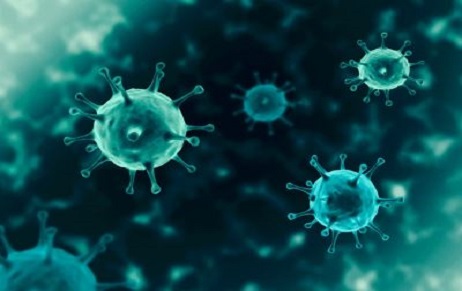COVID-19 & DIGITALISATION IMPEDIMENTS The technology is oft-mentioned as a boon and the Covid-19 has…
CRISPR Patent Process And Its Applicability In The Covid Era
INTRODUCTION
CRISPR technology is a targeted technique that allows researchers to modify genomes with unprecedented precision, efficiency, and flexibility. This technology is at the heart of a true biotechnology revolution, with huge implications for health, agriculture, and a variety of other sectors. On October 7, 2020, Professors Emmanuelle Charpentier and Jennifer Doudna were awarded the Nobel Prize in Chemistry by the Royal Swedish Academy of Sciences for their significant contributions to the CRISPR Cas9 gene-editing method. One would imagine that when the idea’s many applications are marketed around the world, the two award-winning scientists and the institutions to which they belong will reap the great economic rewards of their creation.However, behind the praises, a legal war over the intellectual property (IP) linked to the CRISPRCas9 technology has been raging for years.
What is CRISPR?
The abbreviation CRISPR refers to a naturally occurring collection of short, repeating nucleotide sequences known as “clustered regularly interspaced short palindromic repeats.” Many bacterial genomes contain these sequences, which are known to have a role in antiviral defence. Spacer sequences, which correspond to sequences present in diverse viral genomes, are used to separate the sequences. In bacteria, the spacer sequences are transcribed to RNA in response to a viral threat. With the help of a bacterial enzyme called Cas, the RNA forms an RNA-protein complex (CRISPR-associated). CRISPR is a term that refers to the complete CRISPR/Cas complex.
Although there are several other forms of Cas enzymes, the majority of our knowledge about CRISPR is based on Cas9, which is found in the bacteria Streptococcus pyogenes. The CRISPR/Cas9 complex’s RNA binds to the invading viral genome’s matching sequence. The Cas enzyme, once attached, functions as a pair of molecular scissors, cutting the viral DNA at that location and thereby rendering the virus inactive. This technology has the ability to edit genes in animals to fix mutations at precise sites in order to treat diseases and deformities caused by genetic mutations. In addition to removing HIV in infected mice, researchers employed CRISPR-Cas9 to genetically change mosquitos such that they do not carry the malaria parasite.CRISPR-Cas9 editing has also improved the efficacy of front-line lung cancer chemotherapies, and these are only a few of CRISPR-numerous Cas9’s transformational uses.
Cas12 and Cas13 are two other important enzymes. Cas12, unlike Cas9, which slices the nucleic acid with blunt ends, forms staggered ends, which facilitates in the assimilation of new DNA sequences, making Cas12 more efficient at introducing new genes than Cas9. Cas13 prefers to target RNA rather than DNA.
CRISPR was discovered by Japanese scientists in the late 1980s, but its potential as a programmable gene-editing tool was only recognized in the last decade. The CRISPR/Cas9 complex might be tailored to target practically any portion of a genome having a matching sequence by modifying the sequence of the RNA in the complex.
CRISPR’s potential applications and commercial worth are enormous, with projected market valuations in the billions. Whoever owns the intellectual property that underpins CRISPR will be in a good position to profit from a large portion of this lucrative market. It’s no surprise that multiple research organizations are vying for control of CRISPR as they strive to characterize and develop the technology at the same time.
CRISPR IN INDIA
Intellectual property developments on CRISPR have yet to gain traction in India, with the overall number of patent filings accounting for a small fraction of what is seen elsewhere. This is unsurprising given that nations such as the United States, Europe, China, and Japan are known for their significant investments in emerging technology research and robust intellectual property protection. Furthermore, patents in these jurisdictions can have a significant impact on licencing options.
While certain parts of Section 3 of the Indian Patents Act, 1970 prohibit certain sorts of claims, it is crucial to note that the Act does not pose significant barriers to claimable subject matter, particularly in the context of CRISPR technology. Claims relating to CRISPR/guide ribonucleic acid (gRNA) sequences are plausible, given the design-oriented nature of the technology and ways employing the sequences in vitro applications such as methods of changing cells or genetic elements using CRISPR. Claims relating to new non-naturally occurring endonucleases, such as variations or alternatives to current Cas enzymes that promote CRISPR-mediated cleavage, are also feasible.
In India, aspects that could raise ethical concerns about in vivo applications of technology, such as gene editing in human embryos, stem cells, germ-line stem cells or gametes (section 3(b) of the Patents Act) or those that could potentially prohibit a medical practitioner and involve methods of treatment (section 3(i) of the Patents Act) are excluded from patentability. These restrictions would not prevent a patentee from commercializing inventions based on CRISPR sequences or accompanying endonucleases, which together provide target recognition and cleavage flexibility, which is the technology’s core.Obtaining patent protection for CRISPR RNA sequences or the enzyme for genetic modification, delivery vectors, in vitro gene manipulation methods, and potential optimization techniques and applications arising therefrom would give a patentee enough leverage to protect its interests and prevent trespassing by infringers in India.
The Indian organizations do not appear to realize the potential of intellectual property related to CRISPR, since the number of Indian applicants filing CRISPR-related patent applications remains exceedingly low. While this could be due to a lack of work on this front in India, it’s also possible that the lower number of submissions is due to unpublished research or a preference for literature over patents. Significant upfront research and development expenditures, a long incubation period, the presence of fewer and younger tech companies eager to invest in the technology, and potential licencing commitments to the original inventors are all potential deterrents.While most of these barriers are universal, some inspiration can be drawn from how young Western companies have been able to carve out a niche in this field, with companies like CRISPR Therapeutics, Editas Medicine, Intellia Therapeutics, Poseida Therapeutics, and Beam Therapeutics going public in recent years.
CRISPR has acted as a catalyst in reviving the biotech industry. Recognizing the potential applications of gene editing, India is taking steps to improve the environment so that technologies like CRISPR may be used ethically. The Indian Council of Medical Research (ICMR), the Department of Biotechnology (DBT), and the Central Drugs Standard Control Organisation (CDSCO) issued the draught National Guidelines for Gene Therapy Product Development & Clinical Trials in early 2020, which provides general principles for the development and applications of genome-editing technologies such as CRISPR, while laying down guidelines to address the safety and security concerns. Moreover, the DBT encourages and prioritises research and development in the realm of genome engineering technologies like CRISPR and their applications.
Current scenario: Covid-19 Pandemic
The clinical application of CRISPR may have immediate benefits, particularly in light of the current health crisis. Many countries were under stringent lockdown conditions as a result of the global coronavirus epidemic. In the United Kingdom, questions were being raised about whether herd immunity, enhanced testing, and diagnosis, or a vaccine are the best ways to get out of these draconian restrictions. CRISPR has the potential to play a significant role in diagnostics.
Several laboratories have announced that they have made progress in developing diagnostic kits that could be used to diagnose infectious disorders like COVID-19. Groups led by leaders from the two primary actors in the CRISPR patent battle, the Broad Institute and UC, are at the vanguard of this.
The Broad Institute recently published a strategy for detecting COVID-19 utilizing the CRISPR-based SHERLOCK (Specific High Sensitivity Enzymatic Reporter UnLOCKing) technology with Cas12. The US Food and Drug Administration (FDA) has granted Emergency Use Authorization (EMU) to Sherlock Biosciences, a spin-off of the Broad Institute that has licenced various CRISPR platforms, for its Sherlock CRISPR SARS-CoV-2 tool for the detection of the virus that causes Covid-19. This is the first time CRISPR technology has been approved by the FDA.A protocol has been issued by Mammoth Biosciences, a UC spin-off, to validate a CRISPR-based technique called DETECTR, which uses Cas12, for the diagnosis of COVID-19. Again, the Food and Drug Administration (FDA) has not approved this, and it has not yet been tried on patients.
However, the Broad Institute and UC, as well as their affiliated laboratories and firms, are not the only ones adopting CRISPR-based techniques to create viable COVID-19 diagnostics. Dr. Changchun Liu’s laboratory at the University of Connecticut Health Center has published a preprint describing a simple, low-cost CRISPR-based technique that might be used to detect infectious disorders like COVID-19. The All-In-One Dual CRISPR-Cas12a (AIOD-CRISPR) test includes incubating all of the reagents for nucleic acid detection in a single pot, making nucleic acid detection easy, quick, sensitive, and specific.It’s appealing since it’s highly sensitive and can detect SARS-CoV-2 and HIV with only a few copies of nucleic acids. It’s also been successfully utilized to detect SARS-CoV-2 and HIV. Furthermore, using the CRISPR-Cas13 enzyme, Dr. Neville Sanjana’s team at the New York Genome Center and New York University developed CRISPR RNA screening technique. The technology is currently intended for use on humans, but it might also be used on bacteria and viruses that contain RNA, such as COVID-19.
Recently, an Omicron variation was discovered that was difficult to detect in RT-PCR results. Professors Feng Zhang and Jennifer Doudna, who were feuding over who should get a patent, banded up to fight COVID-19 in an attempt to preserve humanity by using the CRISPR technology to directly detect the genetic material of viruses and mutations. Aside from the challenge of the patent environment, one potential application of CRISPR-based technology that is on everyone’s attention in the current global health crisis is its role in testing and diagnosing infectious diseases. CRISPR may have made the biggest direct contribution to yet in the fight against the global COVID-19 outbreak.The potential applications and financial value of CRISPR are enormous, and it would be advantageous if all stakeholders worked together in the service of humanity. This is a rapidly evolving field, and while some collaboration is expected given that we are in the midst of a worldwide epidemic, there may be future patent issues relating to any processes covered by such patents.
Author: Anuja Saraswat – a student of B.A.LL.B (Hons.) from NMIMS Kirit P. Mehta School of Law (Mumbai), in case of any queries please contact/write back to us via email [email protected] or contact us at IIPRD.



